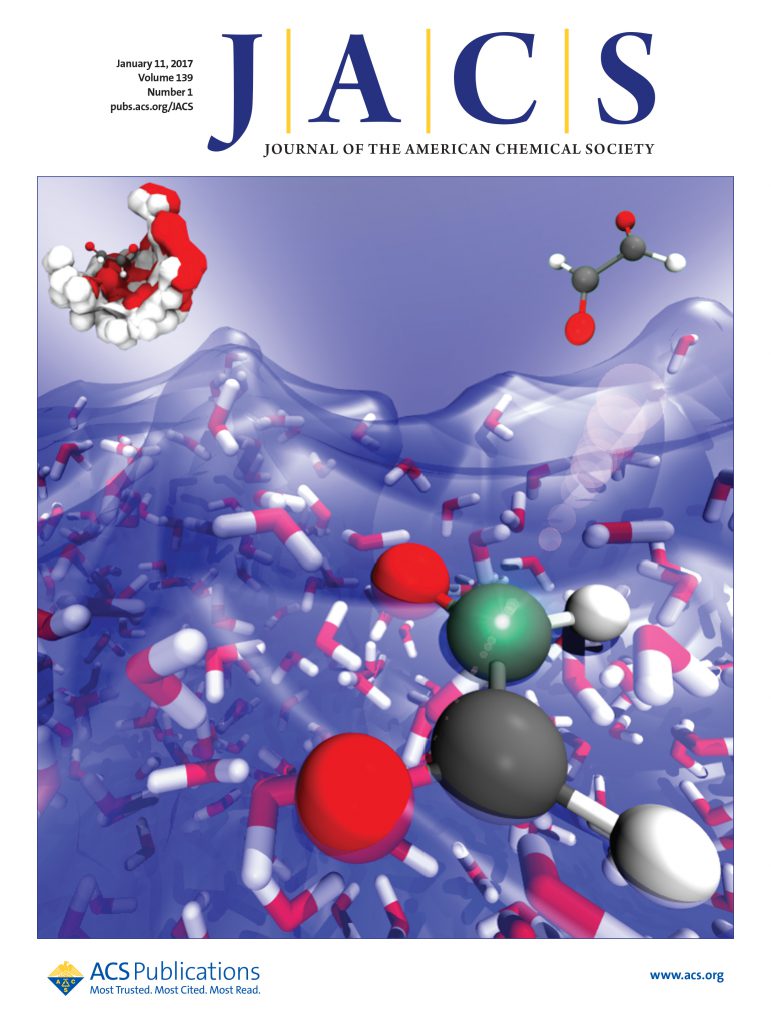Expression of Human β3GalT5–1 in Insect Cells as Active Glycoforms for the Efficient Synthesis of Cancer-Associated Globo-Series Glycans
IF 14.4
1区 化学
Q1 CHEMISTRY, MULTIDISCIPLINARY
引用次数: 0
Abstract
The globo-series glycosphingolipids (GSLs) are unique glycolipids exclusively expressed on the cell surface of various types of cancer and have been used as targets for the development of cancer vaccines and therapeutics. A practical enzymatic method has been developed for the synthesis of globo-series glycans, where the conversion of Gb4 to Gb5 (SSEA-3) glycan based on the microbial galactosyltransferase LgtD is relatively inefficient compared to other steps. To improve the efficiency, we explored the two human galactosyltransferase (β3GalT5) isozymes in cancer cells for this reaction and found that isozyme 1 (β3GalT5–1) is more active than isozyme 2 (β3GalT5–2). We then identified a common soluble domain of the two β3GalT5 isozymes as a candidate and evaluated the activity and substrate specificity of the glycosylated and nonglycosylated glycoforms. The glycoforms expressed in Sf9 cells were selected, and a site-specific alanine scan was performed to identify S66A β3GalT5 variant with 10-fold more efficiency than LgtD for the synthesis of globo-series glycans. The X-ray structure of β3GalT5–1 was determined for molecular modeling, and the result together with kinetic data were used to rationalize the improvement in catalysis.

人β3GalT5-1在昆虫细胞中作为活性糖型的表达,用于高效合成癌症相关globo系列聚糖
globo-series glycosphingolipids (GSLs)是一种独特的糖脂,仅在各种类型的癌症细胞表面表达,已被用作癌症疫苗和治疗药物开发的靶点。建立了一种实用的酶法合成球形系列聚糖的方法,其中基于微生物半乳糖转移酶LgtD将Gb4转化为Gb5 (SSEA-3)聚糖的效率相对较低。为了提高效率,我们在癌细胞中对两种人半乳糖转移酶(β3GalT5)同工酶进行了研究,发现同工酶1 (β3GalT5 - 1)比同工酶2 (β3GalT5 - 2)更有活性。然后,我们确定了两种β3GalT5同位酶的共同可溶性结构域作为候选结构域,并评估了糖基化和非糖基化糖型的活性和底物特异性。选择Sf9细胞中表达的糖型,并进行位点特异性丙氨酸扫描以鉴定S66A β3GalT5变体,其合成gloo系列聚糖的效率比LgtD高10倍。通过测定β3GalT5-1的x射线结构进行分子建模,并结合动力学数据对催化性能的改进进行合理化分析。
本文章由计算机程序翻译,如有差异,请以英文原文为准。
求助全文
约1分钟内获得全文
求助全文
来源期刊
CiteScore
24.40
自引率
6.00%
发文量
2398
审稿时长
1.6 months
期刊介绍:
The flagship journal of the American Chemical Society, known as the Journal of the American Chemical Society (JACS), has been a prestigious publication since its establishment in 1879. It holds a preeminent position in the field of chemistry and related interdisciplinary sciences. JACS is committed to disseminating cutting-edge research papers, covering a wide range of topics, and encompasses approximately 19,000 pages of Articles, Communications, and Perspectives annually. With a weekly publication frequency, JACS plays a vital role in advancing the field of chemistry by providing essential research.

 求助内容:
求助内容: 应助结果提醒方式:
应助结果提醒方式:


